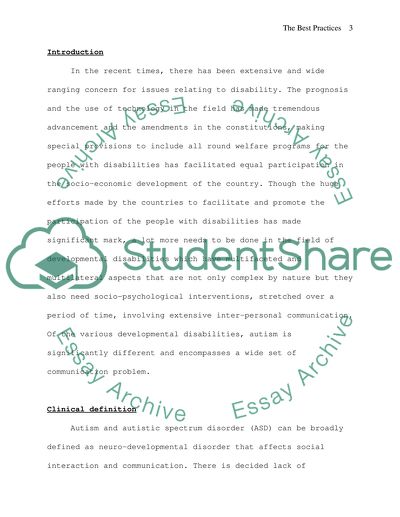Cite this document
(Best Practices on Autism Research Paper Example | Topics and Well Written Essays - 2000 words, n.d.)
Best Practices on Autism Research Paper Example | Topics and Well Written Essays - 2000 words. Retrieved from https://studentshare.org/health-sciences-medicine/1555511-best-practices-on-autism
Best Practices on Autism Research Paper Example | Topics and Well Written Essays - 2000 words. Retrieved from https://studentshare.org/health-sciences-medicine/1555511-best-practices-on-autism
(Best Practices on Autism Research Paper Example | Topics and Well Written Essays - 2000 Words)
Best Practices on Autism Research Paper Example | Topics and Well Written Essays - 2000 Words. https://studentshare.org/health-sciences-medicine/1555511-best-practices-on-autism.
Best Practices on Autism Research Paper Example | Topics and Well Written Essays - 2000 Words. https://studentshare.org/health-sciences-medicine/1555511-best-practices-on-autism.
“Best Practices on Autism Research Paper Example | Topics and Well Written Essays - 2000 Words”. https://studentshare.org/health-sciences-medicine/1555511-best-practices-on-autism.


